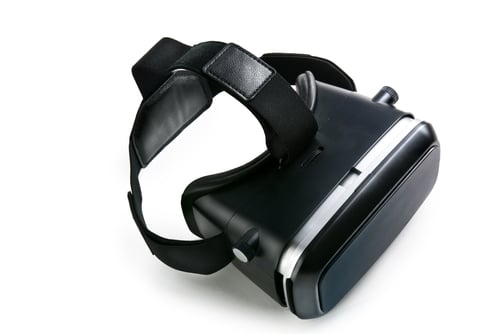
Whichever tool you choose: make it relevant!
Ask any forward-thinking leader in health and safety what’s the secret to continuous improvement? And they’ll tell you it’s keeping things fresh.
Better quality and efficiency doesn’t just happen. They’re borne out of a steady stream of new ideas – clever initiatives that grab people’s attention at work, often employing the latest technology, tools and techniques.
But that inescapable necessity to innovate, come what may, can leave us H&S professionals in a bit of a pickle.
Viewed from above, it’s leaders investing time and effort in the well-being of staff. From below (and without the right culture to back you up), it’s just another top-down fad, probably involving more work. Or worse, another bright idea that’ll soon lose steam and go the way of every other short-lived management drive.
This a situation we all want to avoid. Especially when the real cost of putting flaky ideas into practice can be measured in broken trust between leaders and staff.
Or worse: accidents.
So how can you avoid such short-lived flaky ideas? Whilst at the same time giving yourself the freedom to be creative and experiment with the latest tools and techniques.
To do that, you need to think carefully about how you deploy those clever ideas.
Make it relevant
Let’s take virtual reality (VR) technology as an example – a tool we’re collaborating on with a few of our clients.
In recent years, VR has become increasingly affordable and feasible to use. But as a communication tool for learning about health and safety in the workplace, it’s still cutting edge stuff. Yet we believe the risks and rewards are worth it.
The trick is to make it relevant.
To expand our example, we carefully craft VR environments and scenarios the viewer will identify with, set in familiar workplaces, with familiar sights and sounds.
With that done, you structure the VR experience around the learning points you want the participant to pick up. At strategic points in the VR world, a character might turn to the viewer and directly engage them in a problematic scenario – inviting their opinion, for example.
This might stretch your imagination without having our VR technology to hand, but hopefully you get the point – technology is employed as a vehicle for the message.
A word of warning though: VR (or whichever tool or technique you choose) is just a vehicle to provoke discussion and learning; it’s not an end in itself.
It’s never enough for people to leave a workshop saying ‘that was fun’. There needs to be greater understanding; a meaningful impact, which would hopefully be a change in attitudes to safety and health.
A means to an end, not an end in itself
What you’re really trying to do here is combine your idea (a strong vision for safety) with the advantages of your chosen technology, then use them in synergy. So they resonate with someone in a positive, transformative way.
Likewise, there’s an argument for tailoring the experience even deeper, by profiling your audience by generation. So, using our example, the VR scenarios match the expectations and risk profiles of whoever you want to engage with, based on their age and outlook.
To continue our example, millennials might be your early adopters of a VR-based approach, whereas baby boomers might need a little longer to warm to it, after witnessing the positive effects secondhand.
As you can probably tell, we’re pretty excited about the potential of VR (as are our clients!), but the real power lies in combining it with other immersive communication tools. Though again, this has to be done in the right way.
VR takes people on personal journeys, yet following it with group discussion helps them think, reflect and truly remember the experience. Likewise, live drama creates a group immersive experience. Done well, it keeps people on the edge of their seats, but if your underlying messages are ambiguous, at odds with your audience’s worldview or too subtle, you risk creating a pantomime of bad behaviour that doesn’t ring true and turns people off.
So above all else, your chosen medium has to deliver content that engages on terms your audience can identify with, backed up with a clear, meaningful vision. And whichever tool catches your eye, remember that the real hard work lies in planning and preparation. In giving your message context, and making it resonate with compelling, personal experiences.
For that, you might need a little help from the experts.



